|
|
| Übersicht – Contents: | |
|
|
| Übersicht – Contents: | |
Flaggen – Flags: |
|
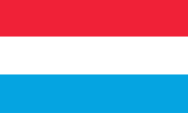 |
Nationalflagge – national flag, Seitenverhältnis – ratio = 3:5, Quelle/Source, nach/by: Flags of the World   |
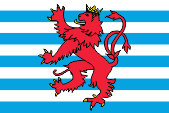 |
Handelsflagge – merchant flag, Seitenverhältnis – ratio = 2:3, Quelle/Source, nach/by: Flags of the World, Corel Draw 4   |
historische Flaggen – historical Flags: |
|
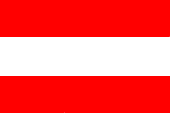 |
1713–1794, Flagge unter den österreichischen Habsburgern – flag under the Austrian Habsburgs, Quelle/Source, nach/by: austria-forum.org   |
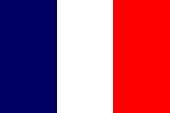 |
1794–1814, Luxemburg gehört zu Frankreich – Luxembourg belongs to France,  |
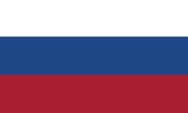 |
ca. 1814–1845, Nationalflagge – national flag, Quelle/Source, nach/by: Flaggen und Wappen der Welt  |
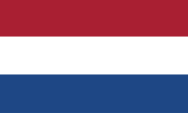 |
1845–1890, Nationalflagge – national flag, Quelle/Source, nach/by: Die Welt der Flaggen  |
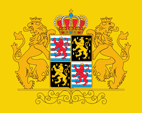 |
1897–2000, Flagge des Großherzogs – flag of the Grand Duke, Seitenverhältnis – ratio = 4:5, Quelle/Source, nach/by: Flags of the World |
| Die Flagge von Luxemburg zeigt drei waagerechte Streifen in den Farben Rot, Weiß und Blau. Die Farben gehen auf das seit 1288 bekannte Wappen des Hauses Luxemburg zurück. | The flag of Luxembourg shows three horizontal stripes in the colours red, white and blue. The colours have their roots in the since 1288 known coat of arms of the house of Louxembourg. |
| Bis zum Jahr 1845 durfte eine horizontal gestreifte Flagge in den Farben Weiß, Blau und Rot verwendet werden. Auch die Farben dieser Flagge nahmen auf das Wappen der Luxemburger Bezug. | To the
year 1845 it was allowed to use a horizontally striped flag in the colours
white, blue and red. As well that colours refer to the coat of arms of the Louxembourgs. |
| Am 12.07.1845 wurde dann erstmals die heutige Farbreihenfolge festgelegt und an die der Niederlande angepasst. Im Prinzip wurde die niederländische Flagge angenommen. Der Grund dafür dürfte die Betonung der Personalunion mit den Niederlanden gewesen sein. | On the 12th of July in 1845 was arranged for the first time the today's sequence of colours and adapted to that of the Netherlands. In principle was adoped the Netherlands flag. The reason for that could have been the accentuation of the personal union with the Netherlands. |
| Als die Personalunion im Jahr 1890 erlosch, und in Luxemburg das Haus Nassau-Weilburg den Thron übernahm, wurde als Zeichen der Trennung von den Niederlanden das Blau in der Flagge von Luxemburg durch Hellblau ersetzt und das Format der Flagge auf 3:5 geändert. Außerdem wurde bis 1912 zusätzlich die blau-orangene Flagge des Hauses Nassau-Weilburg gehisst. Als Kriegsflagge wurde eine Wappenflagge eingeführt. | As the personal union expires in the year 1890 and in Luxembourg the house of Nassau-Weilburg took over the throne, there was substituted as a sign of the separation from the Netherlands the blue in the flag of Luxembourg by a paler blue and they changed the ratio of the flag in 3:5. Moreover there was until 1912 additionally hoisted the blue-orange coloured flag of the house of Nassau-Weilburg. As war flag was introduced a scutcheon-flag. |
| Am 16.08.1972 wurden die Hoheitszeichen des Landes nach kleineren Änderungen letztmalig bestätigt. Es wurden auch kleinere Änderungen für den Gebrauch der Flagge beschlossen. So ist die Wappenflagge seit 1972 als Handelsflagge zu verwenden. Die Farben der Flagge von Luxemburg werden seit 1993 folgendermaßen angegeben: Rot = Pantone 032, Blau = Pantone 299 und Gelb = Pantone 116. | On the 16th of August in 1972 the national emblems of the country were confirmed for the last time after few changes. They also decided some changes for the usage of the flag. So is the scutcheon-flag to use since 1972 as merchant flag. The colours of the flag of Luxembourg have been indicated as follows since 1993: Red = Pantone 032, Blue = Pantone 299 and Yellow = Pantone 116. |
| Quelle/Source: Flaggen und Wappen der Welt, Die Welt der Flaggen, Flaggen Wappen Hymnen, Wikipedia (DE) | |
Wappen – Coat of Arms: |
|
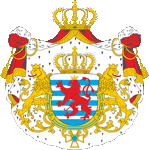 |
Wappen Luxemburgs – coat of arms of Luxembourg, Quelle/Source: Corel Draw 4 |
| Das
Staatswappen zeigt einen neunmal geteilten Schild in Silber und Blau mit
einem gekrönten, doppelschwänzigen roten Löwen. Dieser Wappenschild ist seit
dem Jahr 1288 bekannt. In der heutigen Form wurde das Wappen am 18.05.1972 offiziell bestätigt. Rund um den Wappenschild liegt das Ordensband des Ordens der Eichenkrone. Der Schild wird gehalten von zwei goldenen Löwen. Oberhalb des Schildes die Krone des Großherzogs. Das ganze Wappen ist von einem roten Wappenmantel umgeben, der aus einer weiteren Darstellung der Krone des Großherzogs herabfällt. |
The coat
of arms shows a nine times divided shield in silver and blue with a crowned,
twin-tailed red lion. This blazon is known since the year 1288. In the today's shape the coat of arms was officially confirmed on the 18th of may in 1972. Around the blazon is positioned the order ribbon of the Order of the Oak Crown. The shield is supported by two golden lions. Above the shield the crown of the Grand Duke. The whole coat of arms is enveloped by a red overcoat of coat of arms which falls down out of a further depiction of the crown of the Grand Duke. |
| Quelle/Source: Flaggen und Wappen der Welt, Die Welt der Flaggen, Flaggen Wappen Hymnen, Wikipedia (DE) | |
|
Lesen Sie hier: Hintergründe, Geschichte und Fakten zum Thema "Der Löwe in der Heraldik". Ausführungen, Varianten, Entwicklung sowie Panther und Leoparden. |
 |
| Kokarde – cockade: | |
 |
bis/to 1898 Kokarde – cockade, Quelle/Source: Jürgen Kaltschmitt → H.u.R.Knötel/H.Sieg, "Farbiges Handbuch der Uniformkunde" |
 |
ab/from 1898 Kokarde – cockade, Quelle/Source: Jürgen Kaltschmitt → H.u.R.Knötel/H.Sieg, "Farbiges Handbuch der Uniformkunde" |
|
Lesen Sie hier: Hintergründe, Geschichte und Fakten zum Thema "Kokarden". |
 Kokarde / Cockade |
read here: Informations, history and facts about the theme "Cockades". |
Flugzeugkokarde – aircraft roundel: |
|
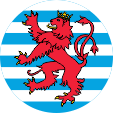 |
Flugzeugkokarde – aircraft roundel Quelle/Source, nach/by: Wikipedia (EN) |
Landkarte – Map: |
Lage – Position: |
Landkarte des Landes – Map of the Country: |
|
|
| Zahlen und Fakten – Numbers and Facts: | |
|
|
|
|
|
|
|
|
|
|
|
|
|
|
|
|
|
|
|
|
|
| 963 ·
Graf Siegfried erwirbt die zum Deutschen Reich gehörende Grafschaft
Lützelburg, das spätere Luxemburg 12. und 13. Jhd. · territoriale Zuwächse 1310 · das Haus Luxemburg erwirbt durch Heirat Böhmen 1354 · der Deutsche Kaiser Karl IV., aus dem Haus Luxemburg, erhebt die Grafschaft Luxemburg zum Herzogtum 1386 · der Böhmische König Wenzel verpfändet Luxemburg an Burgund 1437 · das Haus Luxemburg stirbt aus 1443 · Philipp von Burgund kauft das Herzogtum Luxemburg 1477 · das Haus Habsburg erwirbt das Herzogtum Luxemburg 1555 · bei der Erbteilung des Hauses Habsburg kommt Luxemburg an die spanische Linie 1684–1697 · Luxemburg gehört kurzzeitig zu Frankreich 1713 · die österreichische Linie des Hauses Habsburg erwirbt Luxemburg 1794 · Napoléon erobert und annektiert Luxemburg 1814 · Wiener Kongress, Luxemburg wird Mitglied des Deutschen Bundes, zum Großherzogtum erhoben und in Personalunion mit dem Königreich der Niederlande verbunden → der niederländische König ist Großherzog von Luxemburg 1839 · Luxemburg muss die Hälfte seines Territoriums an Belgien abtreten 1866 · im Bruderkrieg auf Seiten des Deutschen Bundes, der Deutsche Bund unterliegt jedoch gegen Preußen, Luxemburg darf daher nicht in den Norddeutschen Bund eintreten und wird sich selbst überlassen 1890 · Tod des niederländischen Königs Wilhelms III. von Oranien, die Personalunion mit den Niederlanden wird gelöst, Adolf von Nassau-Weilburg und Oranien wird Großherzog von Luxemburg 1914–1918 · Erster Weltkrieg: 1914 deutsche Truppen besetzen Luxemburg und müssen nach dem Waffenstillstand vom 11.11.1918 das Land wieder verlassen 1920 · Wirtschaftsunion mit Belgien, Abbruch der engen Beziehungen zum Deutschen Reich 1939–1945 · Zweiter Weltkrieg: 1940 deutsche Truppen besetzen Luxemburg, das Land wird dem Deutschen Reich angeschlossen, im Januar 1945 wird Luxemburg von Alliierten Truppen besetzt, Luxemburg wird wieder ein selbständiger Staat 1946 · Luxemburg wird Mitglied der VN 1947 · Bildung der Benelux-Zollunion (Belgien, Niederlande, Luxemburg) 1949 · Beitritt zur NATO 1951 · Belgien, Deutschland, Frankreich, Italien, Luxemburg und die Niederlande, gründen die EWG (die spätere EU) 1957 · Beitritt zur EWG (die heutige Europäische Union) 1960 · Bildung der Benelux-Wirtschaftsunion |
| 963 ·
Count Siegfried purchases the to the German Empire belonging County of
Luetzelburg, the later Luxembourg 12th and 13th cent. · territorial increase 1310 · the house of Luxembourg purchases Bohemia by marriage 1354 · the German Emperor Karl IV., from the House Luxemburg levies the County of Luxembourg to a duchy 1386 · the Bohemian King Wenzel mortgages Luxembourg to Burgund 1437 · the House Luxemburg vanishes 1443 · Philipp of Burgund buys the Duchy of Luxembourg 1477 · the House Habsburg purchases the Duchy of Luxembourg 1555 · distribution of the heritage of the House Habsburg, Luxembourg comes to the Spanish line 1684–1697 · Luxembourg belongs momentary to France 1713 · the Austrian linie of the House Habsburg purchases Luxembourg 1794 · Napoléon conquers and annexes Luxembourg 1814 · Vienna Congress, Luxembourg becomes a member of the German Confederation, gets levied to a Grand Duchy and fused in personal union with the Kingdom of the Netherlands → the Netherlands King is the Grand Duke of Luxembourg 1839 · Luxembourg has to cede the half of its territory to Belgium 1866 · in the Fratricidal War on the side of the German Confederation, but the German Confederation loses against Prussia, Luxembourg is that's why not allowed to join the North German Confederation and has to take care of itself 1890 · death of the Netherlands King Wilhelm III. of Orania, the personal union with the Netherlands becomes disbanded, Adolf of Nassau-Weilburg and Orania becomes Grand Duke of Luxembourg 1914–1918 · First World War: 1914 German troops occupy Luxembourg and have to leave the country after the armistice of the 11th of November in 1918 1920 · economic union with Belgium, termination of the close relationships to the German Empire 1939–1945 · Second World War: 1940 German troops occupy Luxembourg, the country becomes annexed by the German Empire, in January of 1945 Luxembourg becomes occupied by allied troops, Luxembourg becomes again a independent state 1946 · Luxembourg becomes a member of the UNO 1947 · establishment of the Benelux customs union (Belgium, Netherlands, Luxembourg) 1949 · joining to the NATO 1951 · Belgium, Germany, France, Italy, Luxembourg and the Netherlands, found the EEC (the later EU) 1957 · joining to the EWG (the today's European Union) 1960 · establishment of the Benelux economic union |
| Quelle/Source: Atlas zur Geschichte, Wikipedia (D), Discovery '97 |
| Der Name "Luxemburg" ist entlehnt aus dem mittelalterlichen Namen "Lützelburg", was "kleine Burg" heißt. | The name "Luxembourg" is borrowed from the medieval name "Luetzelburg", what means "little Castle". |
| Quelle/Source: Atlas zur Geschichte, Wikipedia (D), Discovery '97 | |
|
Mit freundlicher Untersützung von: Kindly supported by: |
E. Hoheisel (D) |